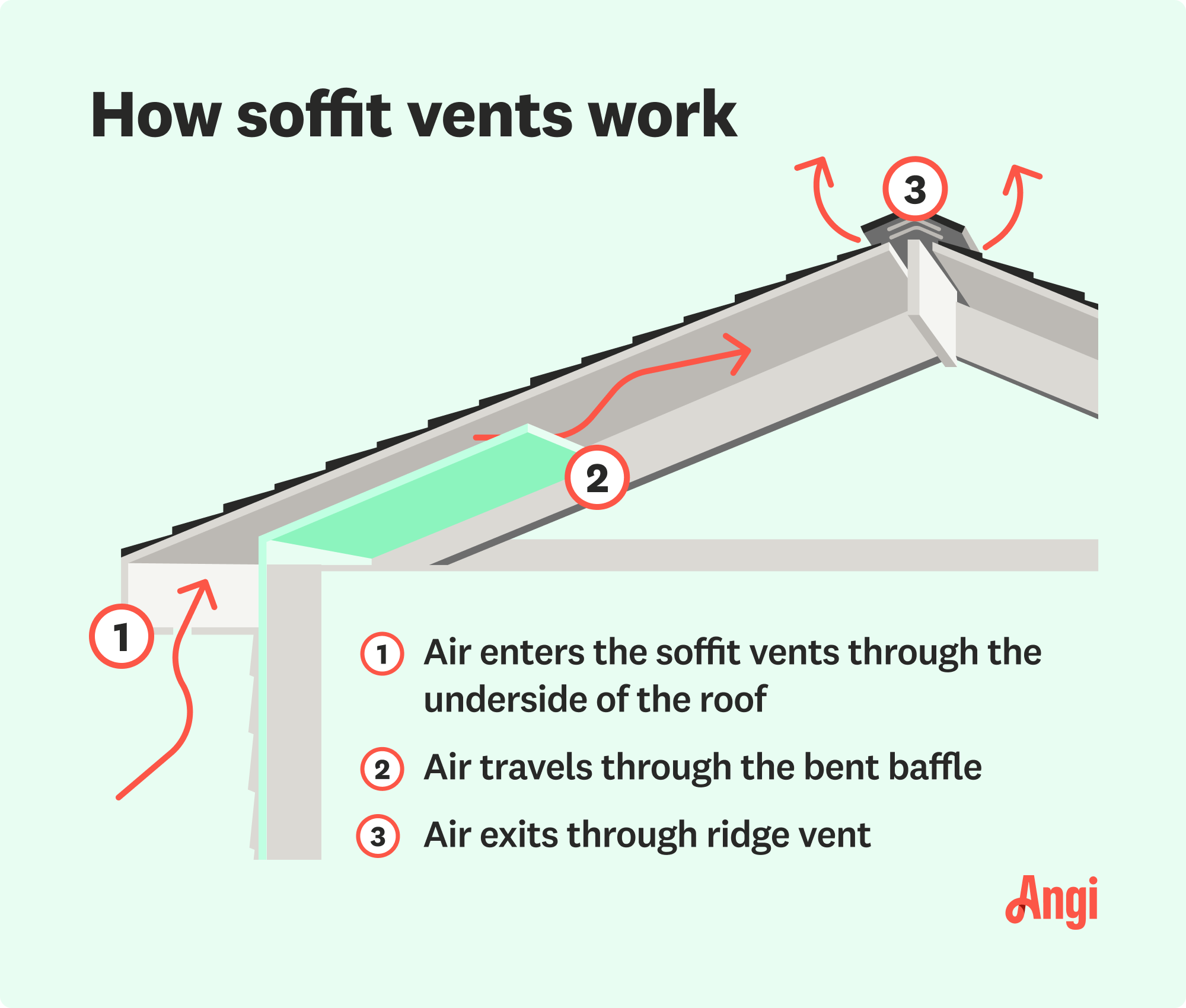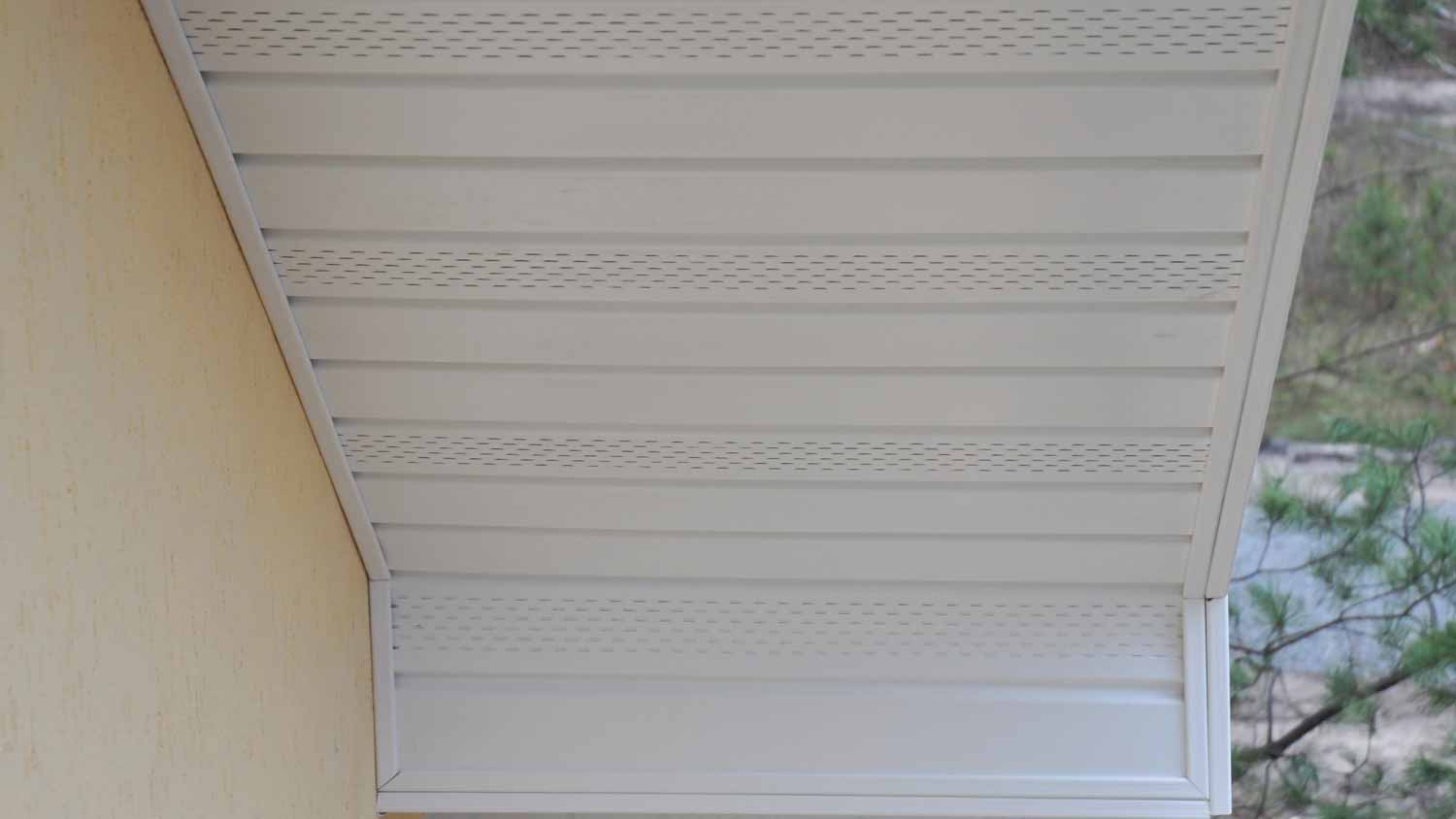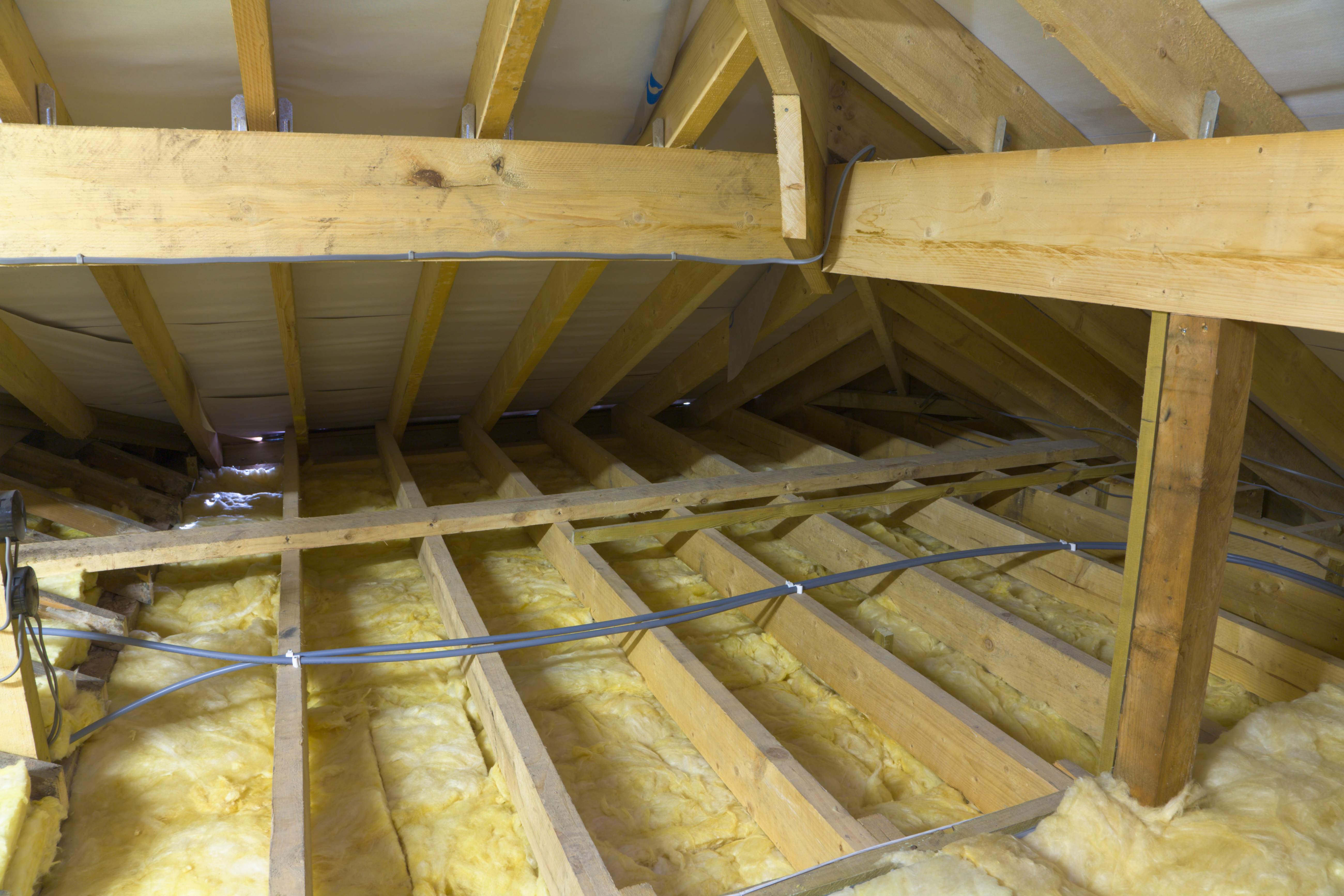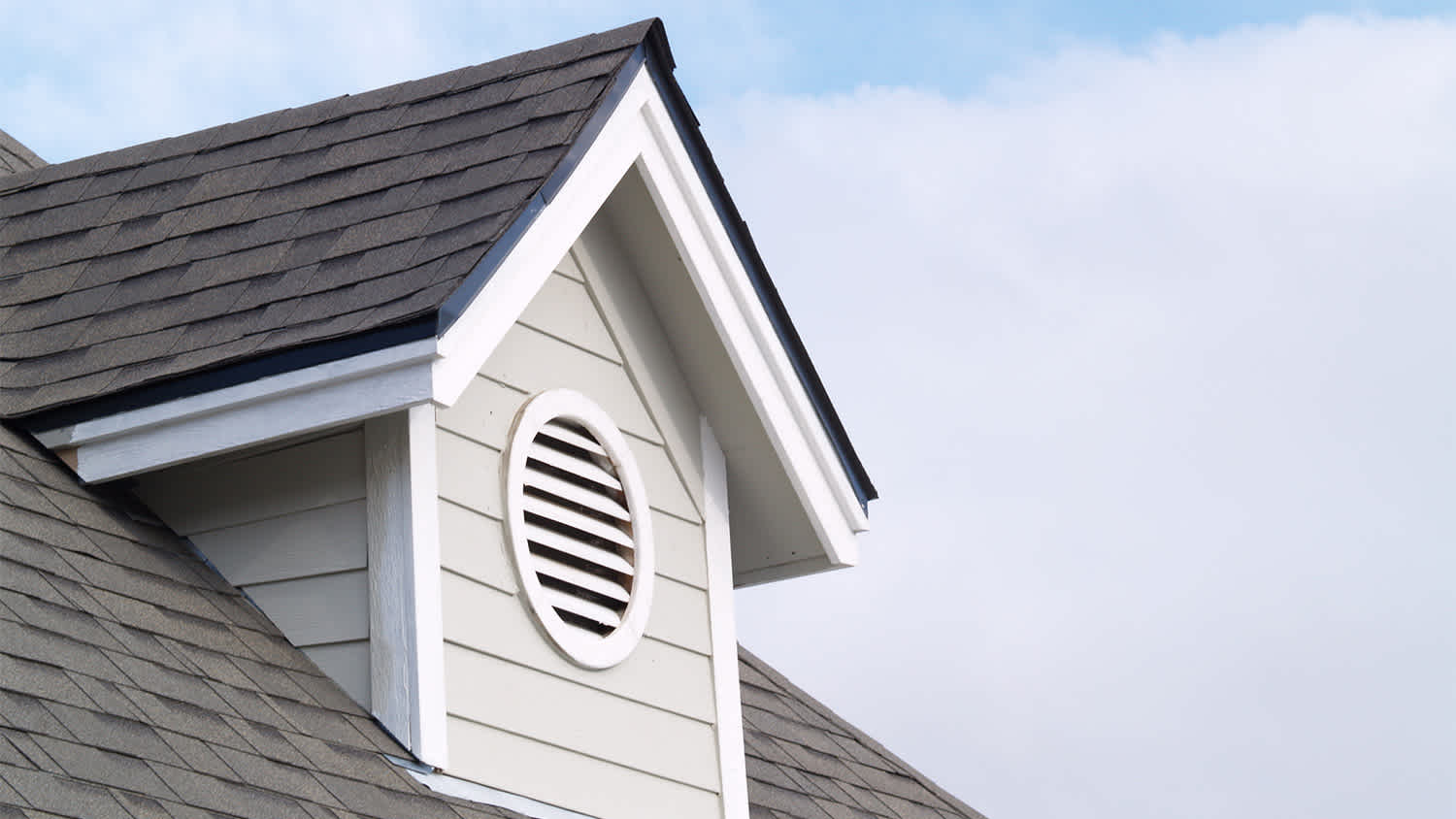
What you’ll pay in Columbus, OH, for furnace repairs depends on many factors. Here’s a breakdown of what can go wrong and the cost to fix those issues.
Don’t sweat it with these attic ventilation tips


Your attic works hard in temperatures that often climb over 100 degrees in summer while also dealing with moisture buildup that threatens your entire home’s structure. But your attic needs to catch its breath, so to speak, and let out some of that warm air. Unfortunately, when your attic can’t release air properly, it can cause high energy bills, ice dams, and even roof damage. Most attic ventilation problems are fixable, so you can maintain a system that keeps your home comfortable for years to come. Here are attic ventilation tips to help circulate that air.

To solve ventilation issues, you first need to understand how airflow in this part of your home works. Cool air comes in through vents under your roof edges—called soffits—travels up through your attic, and hot air exits through vents at the top. Essentially, hot air rises and cool air replaces it.
However, many people think more vents automatically equal better airflow. Instead, you need the right vents in the right places, or you're just creating expensive holes in your roof. This is why it is best to rely on a local roofing company to assess your specific needs.
One of the most common mistakes homeowners make is guessing at their ventilation requirements instead of doing the math.
The general rule is simple: You need 1 square foot of ventilation for every 150 square feet of attic floor space, split evenly between intake and exhaust vents. So, if your attic covers 1,200 square feet, you'll need about 8 square feet of total ventilation, with 4 square feet dedicated to intake and 4 to exhaust.
This calculation ensures that your system can handle the air volume needed to keep temperatures and humidity in check. That way, when summer rolls around, you won’t have an attic that's too hot, driving up cooling costs.

Soffit vents are where cool air enters, but most houses either don’t have enough or they’re completely blocked. Homeowners may paint right over them, fill the vents with insulation, or install soffits that are just too small.
If your house was built before soffit ventilation became standard (around the 1940s), you probably need new ones. The installation isn’t too difficult: cut holes in the soffit, install the vents, and make sure nothing is blocking them inside. However, you’ll want to keep insulation away from these openings, which is where baffles come in.
Baffles keep your ventilation system working. These simple plastic or cardboard channels go between your roof rafters and create highways for air to travel from soffit vents into your attic space. Without them, blown-in insulation migrates over and blocks your intake vents completely.
If you install new soffit vents, make sure to also install the baffles. They staple right to your roof decking, and a roofer should be able to install them quickly.

Insulation and ventilation have a complicated relationship. You need insulation for energy efficiency, but it can't block your airflow paths. The signs of poor attic ventilation usually trace back to insulation problems—either the insulation is covering vents or creating dead air pockets.
Blown-in insulation can settle over soffit openings, while batt insulation gets compressed and blocks air channels. The fix involves installing proper baffles and sometimes building little dams to keep loose insulation where it belongs.
Ridge vents run along your roof peak and work with physics instead of fighting it. Hot air naturally wants to rise and escape at the highest point, so these vents help it along.
Installation means cutting a slot along your roof ridge and installing a vent that keeps rain out while letting air escape. This creates suction that pulls air up from your soffit vents, completing the circuit.

Whole-house attic fans seem like the obvious solution. However, while they can help, they can also create problems if your intake system can’t keep up. You’ll end up pulling conditioned air from inside your house instead of outside air.
First, get your passive system (intake and exhaust vents) working properly. If that's still not enough, consider powered options. The attic fan installation cost varies quite a bit depending on what you choose and whether electrical work is needed, but the average range is about $370 to $900.
Your attic will tell you when ventilation isn’t working once you know what to look for. Ice dams in winter happen when trapped warm air melts snow that refreezes at the roof edges. Summer brings overworked air conditioners struggling against superheated attics.
Watch for condensation on surfaces, musty smells, or rust on metal components. These point to moisture problems that lead to mold, rot, and expensive repairs. Catching issues early beats dealing with structural damage later.
Some ventilation fixes are perfect weekend projects. Others require professionals, especially if you’re dealing with complex rooflines, electrical work, or coordinating with other roofing repairs. Contractors can also spot problems you might miss and ensure everything meets local codes.
If you see extensive moisture damage or mold, call a pro. A professional assessment often reveals multiple problems working together, like undersized systems or airflow patterns that fight each other instead of helping.
Good attic ventilation protects your house and keeps energy costs reasonable. Pay attention to your system, fix small problems before they become big ones, and your attic will keep doing its job.
From average costs to expert advice, get all the answers you need to get your job done.

What you’ll pay in Columbus, OH, for furnace repairs depends on many factors. Here’s a breakdown of what can go wrong and the cost to fix those issues.

A faulty evaporator coil is a common cause of AC failure. But how much does an evaporator coil replacement cost? We explore the factors here.

Faulty AC drip pans can lead to pesky leaks and improper home cooling. Find out how much AC drip pan replacement costs for your cooling system.

If your window AC needs some TLC, learn who to hire to clean and repair window AC units. Check out what you can do as a DIYer and what’s best left to a pro.

Water-cooled air conditioners use water in the cooling process of your air conditioner. Primarily used in larger buildings, these energy-efficient AC units can also be used in residential areas. Read on to learn more about these air conditioners.

When the furnace stops working, you may ask yourself: repair or replace? Find out whether to replace a blower motor or buy a new furnace with this guide.